VACCINE DRIVE OP-ED
Calling the shots: How to get South Africa’s work vaccination programmes right
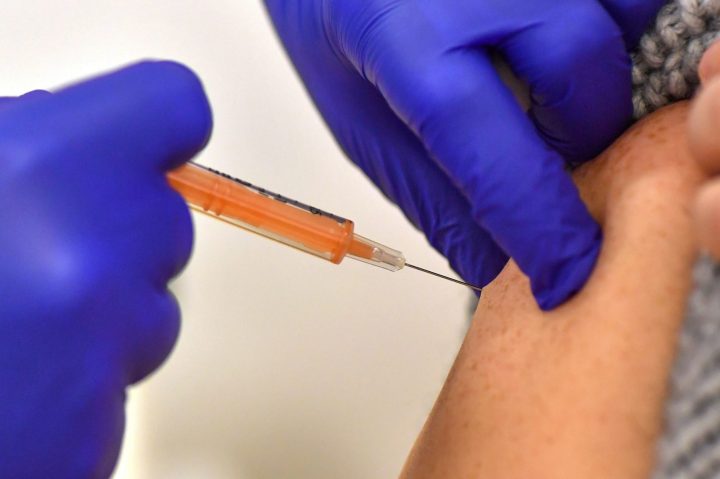
It is imperative the government and private sector continue to work together to expedite the countrywide vaccine roll-out – because if vaccination passports become a global imperative, our depressed economy will struggle to survive being shut out of trade should we not make significant strides.
It’s been a year since South Africa introduced a hard lockdown, and the Covid-19 pandemic still grabs headlines. Globally, the virus has been devastating, with more than 120 million cases and more than 2.7 million deaths.
And South Africa – as the most severely affected African nation – is reeling from a devastating second wave. It has recorded more than 50,000 deaths, although this may be higher when excess deaths are counted.
As of 7 April 2021, the South African Medical Research Council reported more than 151,000 excess deaths between 3 May 2020 and 27 March 2021. With the number alarmingly higher than what is reported, the need for vaccinations and a rapid mass roll-out across South Africa is clear. At the end of March, total excess deaths were greater than confirmed Covid-19 deaths by a factor of about three.
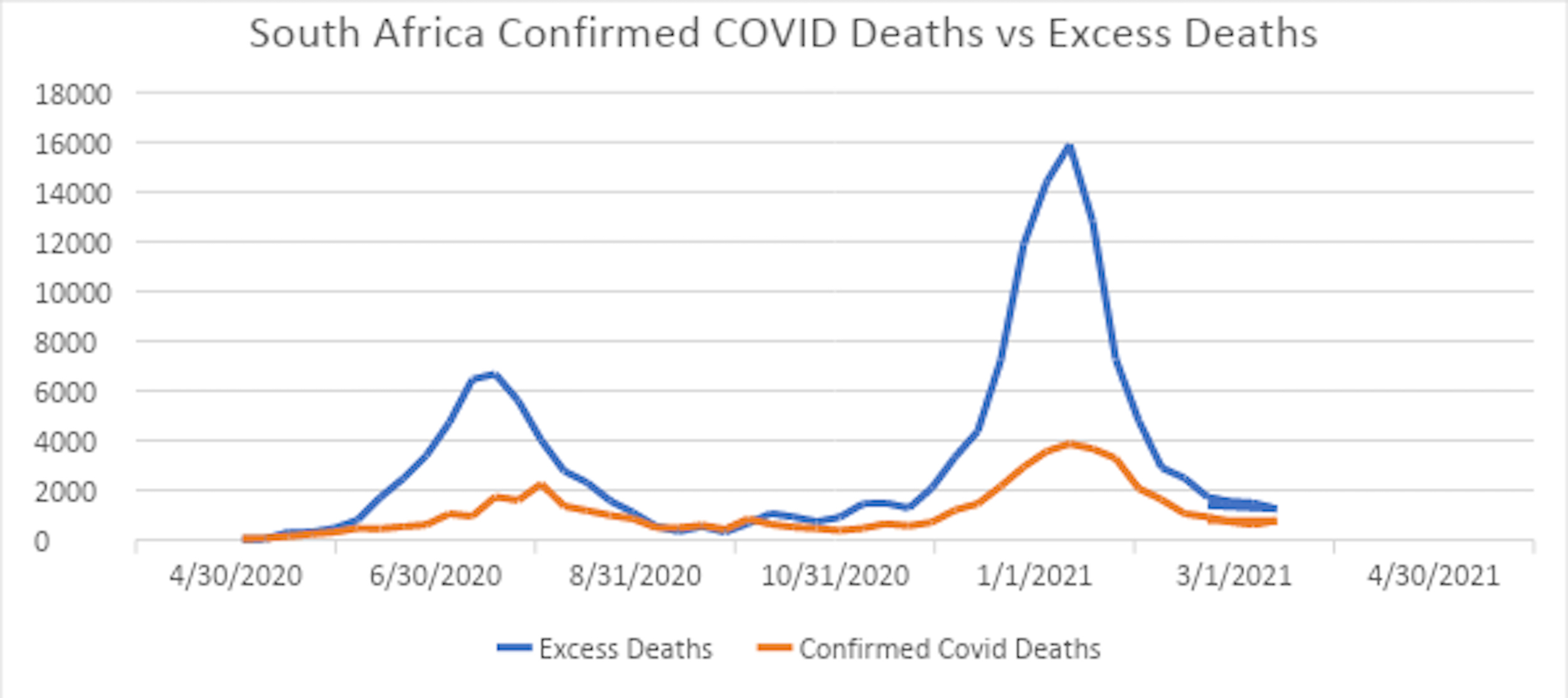
Figure 1: Excess deaths vs Covid-19 deaths have a very clear correlation.
Economic considerations
From March to April 2020, the hard lockdown had a devastating impact on trade and the economy as a whole, with South Africa’s GDP shrinking more than 7% from the prior year, recording levels close to 2012. The economy entered recovery mode as we moved into 2021.
It is imperative that the government and private sector continue to work together to ensure a continued economic recovery, which includes expediting the roll-out of vaccinations across the country.
Economic recovery will be accelerated by population vaccination.
However, only 20% of countries are expected to reach widespread vaccine coverage of their populations by late 2021, creating some risk of a resurgence of infection rates and disruption to economic activities. Countries expected to be the last to achieve widespread vaccination coverage are mainly in Africa.
The longer it takes to reach widespread coverage, the higher the likelihood of further economic disruption. It is important to note, however, that the picture is constantly changing as countries continue to negotiate for access to vaccines.

South Africa Real GDP impact of COVID-19 sees SA back to 2012 GDP levels.

The Economist Intelligence Unit (2021).
In February 2021, the World Health Organisation issued interim guidance on the use of Covid-19 vaccination documents, which state:
“At the present time, it is WHO’s position that national authorities and conveyance operators should not introduce requirements of proof of Covid-19 vaccination for international travel.” However, the EU is pushing to launch a Digital Green Certificate urgently.
Should vaccination passports become a global imperative, our already severely depressed economy will struggle to survive being shut out or suppressed from trade should we not have made significant strides in our vaccination effort.
South Africa will need to create mechanisms to safeguard and support international vaccination efforts while respecting individual human rights and ensuring international trade and movement can continue as the economy continues to rebuild.
The approaching third wave
As we have now moved past the devastating second wave in South Africa, we brace ourselves for a third. Following what has been seen in countries such as Israel and Turkey, we need to prepare for another severe wave (see Figure 3). The third wave has typically occurred one to two months after the second, and the time between peaks can be seen to be about three months.
This means South Africa could expect the next wave as early as April should we follow the global trend. We can, however, be better prepared for the third wave, considering what we learnt during our first and second. Wave two was characterised by the new “South African variant” and we should not ignore the fact that new variants may continue to emerge.
A significant driver of deaths in the second wave was the severe burden on hospitals which deprived patients of access to healthcare but did not necessarily mean the local variant was “more deadly”. Given this, we have time to prepare and reduce the load on the healthcare system. Unfortunately, wave three will probably hit before we have made significant strides in vaccinations. However, it will create impetus for the public and private sectors to unite and achieve our vaccination targets before a possible fourth wave.
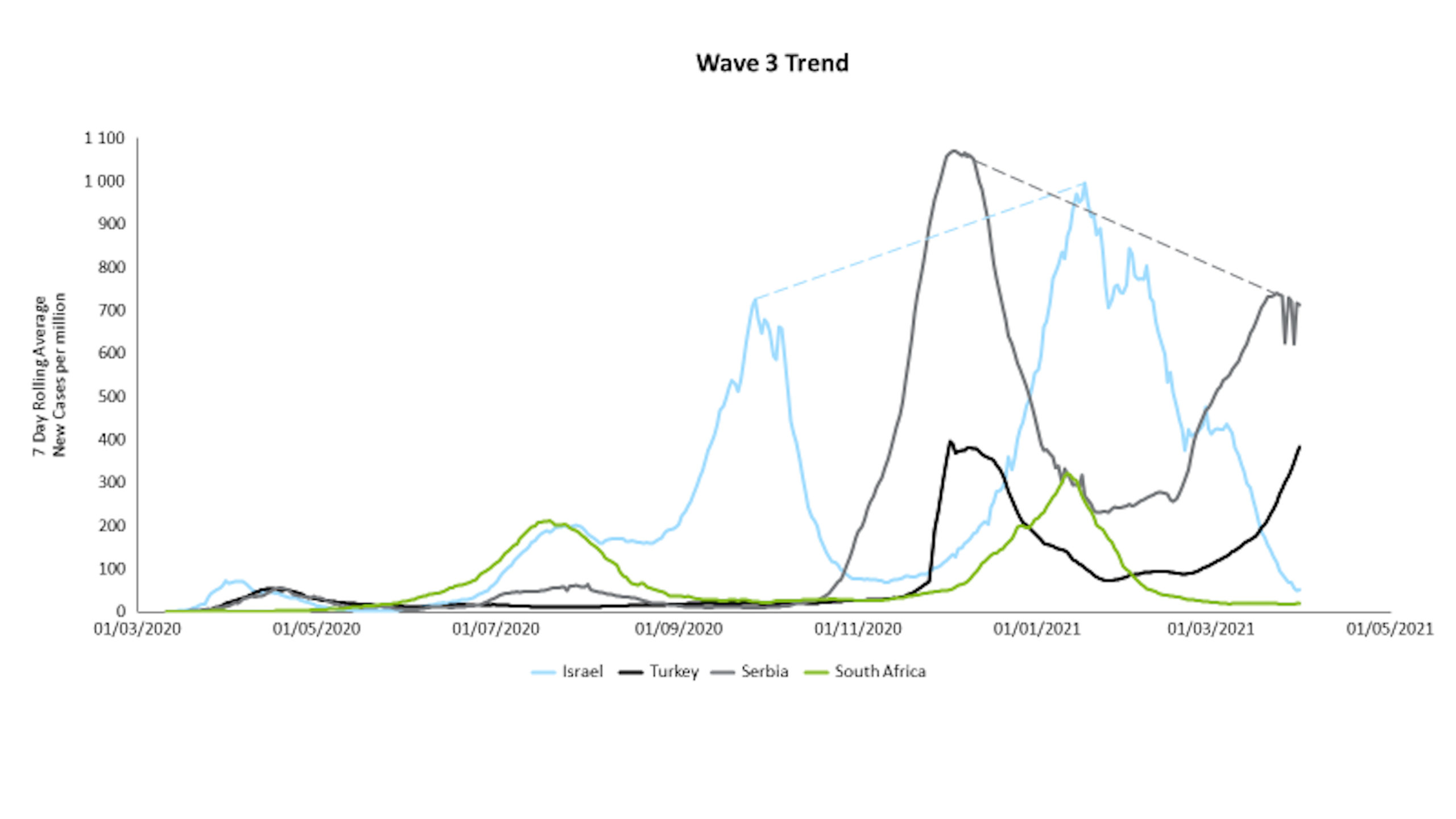
Wave 3 trend highlights an approximate three-month gap between the peaks of waves two and three. South Africa could see a third-wave peak in early May if this trend holds.
South African vaccination efforts
As we have seen with the initial roll-out of the Johnson & Johnson vaccination to healthcare workers, as part of a Phase 3B implementation study, there are many challenges to overcome for an effective national roll-out. However, South Africa and its experts have highlighted their ability to come up with solutions quickly.
The government has announced a target of vaccinating about 40 million South Africans in a phased roll-out. The formal employed sector (non-agricultural) (about 10 million people as at the fourth quarter of 2020, according to Stats SA) accounts for more than 20% of this target. Therefore workplace vaccination programmes in the formal sector could become a key and significant contributor towards the government achieving its vaccination targets.
A coordinated, end-to-end workplace programme can help mitigate some key uncertainties and potential difficulties in South Africa, as noted below:
Vaccination procurement
The current challenge for the private sector is how to access vaccines under the national central procurement process. This could be aided by a private sector mechanism and central workplace vaccination programmes, following official guidance from the government.
Double-dose administration challenge
Included in the government’s most recent update on the status of vaccination procurement was the announcement of 20 million Pfizer vaccines being secured (enough to fully vaccinate 10 million). This vaccine requires a double dose, but a more controlled roll-out in the formal, employed sector could help track and monitor doses.
Employers would have the ability to manage employees and ensure appropriate notices are sent to help meet the goal of a fully vaccinated population. One possible concern with a double-dose regimen is that people do not return in time or miss appointments to receive the second dose.
Productivity
An end-to-end workplace vaccination programme not only gives employees access to vaccinations but can assist in ensuring productivity remains relatively high. The roll-out can help to limit employee downtime due to a reduced risk of infection, while a centrally managed workplace programme allows employers to plan for employees to get vaccinated and ensure scheduling optimises workplace planning.
Funding challenges
A national roll-out of this scale has significant cost implications for the government, but involvement of the private sector and ensuring employees are vaccinated benefits employees, employers and the government. With reduced employee downtime, the cost of setting up and using workplace vaccination programmes may be further offset.
Taking all of the above into account, it can be seen that workforce vaccination programmes in the private sector are critical to ensuring South Africa’s vaccination roll-out targets are met.
So, what are the pertinent aspects employers need to consider and include in their programmes?
Employee engagement
A key element in developing a workplace vaccination programme is the resistance/hesitance that may be shown towards employees getting vaccinated, leading to reduced employee uptake and possibly rendering the programme ineffective.
A recent IPSOS Survey conducted on behalf of the World Economic Forum revealed that only 61% of South Africans surveyed showed an interest in getting vaccinated. However, this has improved by 6% from December 2020.
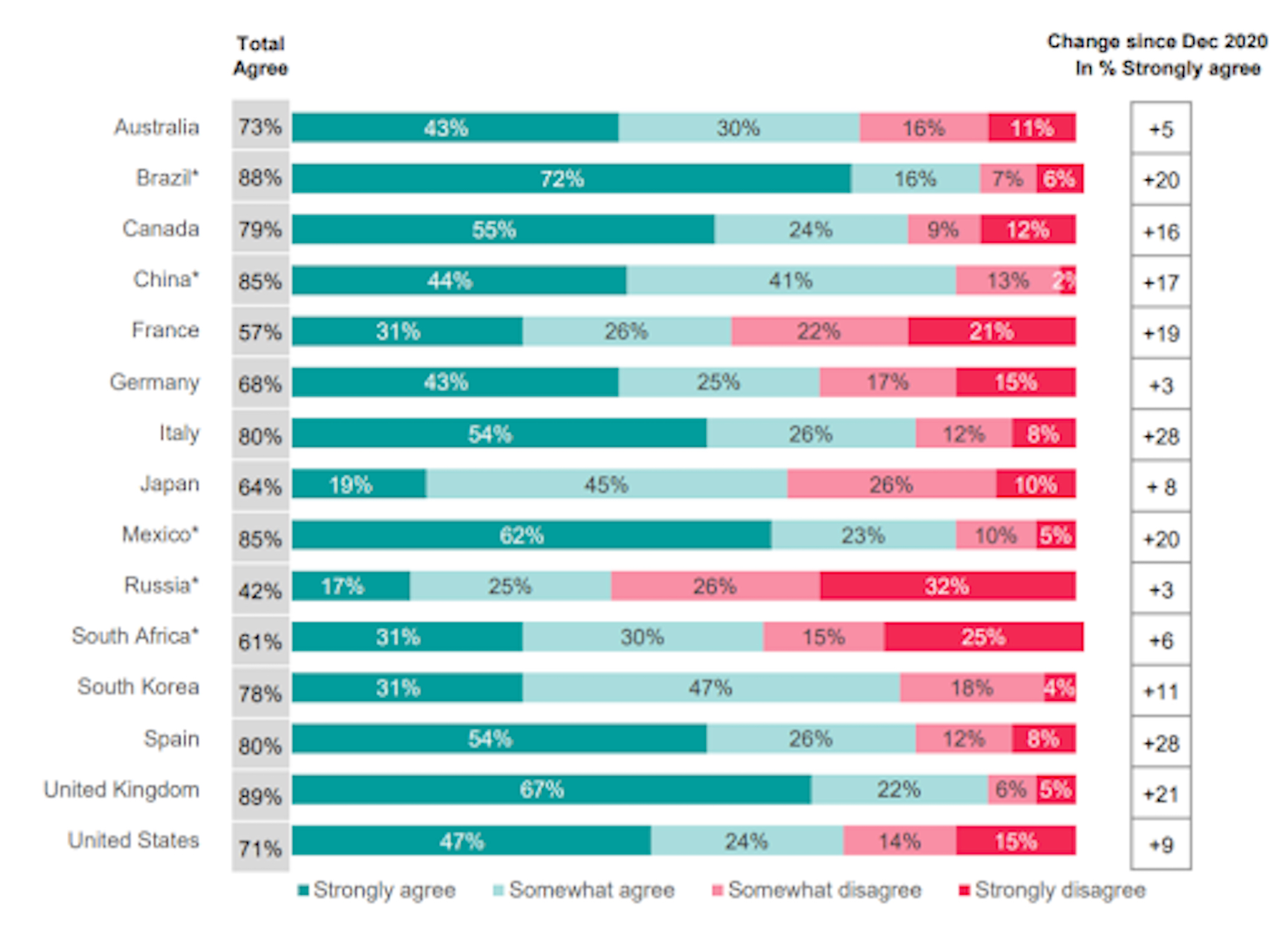
IPSOS Survey Results: Global attitudes: Covid-19 vaccines.
Of the South Africans surveyed, 72% said their greatest fears/concerns about being vaccinated concerned side-effects (39%) and that the vaccine is progressing too fast through clinical trials (33%).
Key themes that have emerged in understanding hesitancy are trust, fear, and personal beliefs. To gain trust, minimise fear and unpack beliefs requires that clear employee engagement and communications strategies form the backbone of a workplace programme.
Employers need to ensure targeted educational campaigns are created and communicated to all stakeholders, including trade unions, executives and employees. Education around vaccinations, how the process will work, and risk factors needs to be clearly thought out and employees engaged.
Site requirements
The next step in understanding a workplace vaccination programme, specifically for Covid-19, is ensuring all relevant components are in place and aligned to national standards. This includes necessary staff, equipment and vaccination-area design.
We have briefly summarised what these components are, and how to ensure adequate capacity planning, details of staff as well as equipment and site design that need to be considered (noting that site consumables have not been included in the site requirements detailed below).
Workplace vaccination programme site requirements (layout and equipment)
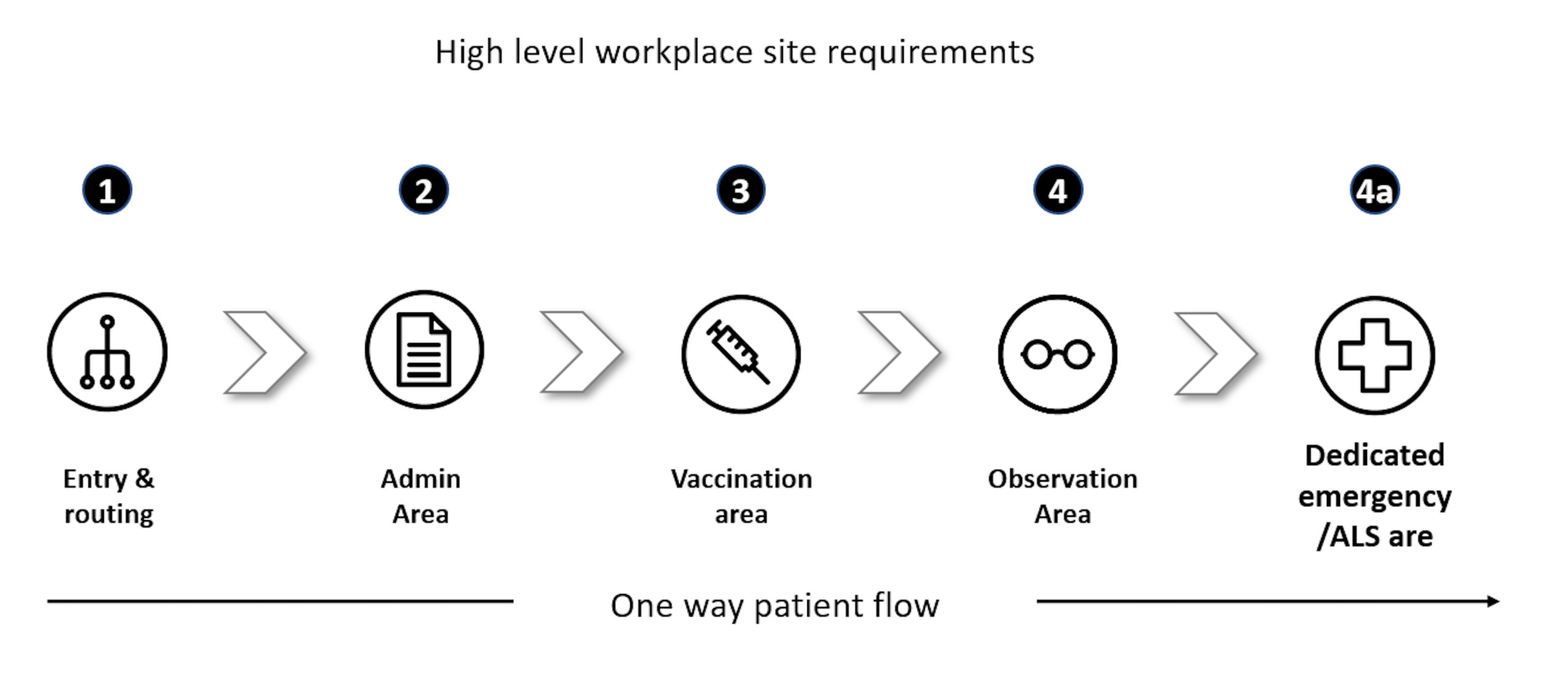
Then, the following key considerations should be made when considering site and staffing requirements:
Site layout
- Entry and routing: Clearly marked, ventilated, directs patients to admin and waiting area;
- Admin area: Employers need to ensure adequate equipment in the area is provided, including seating and tables. Tablets/laptops with internet access are required;
- Vaccination area: Seating for the nurse and patient, laptop/tablet, and internet connectivity to ensure vaccinations can be captured on the national EVDS system;
- Observation area: After being vaccinated people must remain under observation for 15 minutes, to ensure physical distancing; and
- Dedicated emergency/ALS area: A clearly marked area with all relevant emergency medicine equipment is required to ensure a swift response to any adverse reaction.
Staffing requirements
- Coordinator: Every vaccination site will require a coordinator to ensure staff, supplies and equipment are correctly maintained, to ensure the smooth functioning of the vaccination site;
- Nurse: Consider how many nurses are required to reach vaccination targets;
- Current capacity estimates: About five vaccinations per hour during eight-hour shifts – 40 vaccinations per nurse per day. This assumes nurses are already trained for respective vaccination type;
- Admin: Capture employee details on the National EVDS system prior to vaccination by the nurse. Recommendation of one administrator for every three nurses on-site;
- ALS/ILS: ALS/ILS paramedic or trained medical staff on standby to respond to adverse reactions following vaccination; and
- Observation staff: Should a small vaccination site be used, where nurses are able to observe patients in the waiting area while continuing with vaccinations, this approach could also be followed. Alternatively, observers will be required.
Additional elements that employers need to consider are the logistical partnerships required to ensure delivery of vaccinations to sites, including consumables such as needles and syringes.
At sites where a central venue or room is available, additional equipment such as marquees or tents will not be necessary. However, this is a site-specific requirement and needs to be carefully planned.
Based on the design of an end-to-end workplace programme, we have modelled the likely costs of vaccinating a workforce (assuming a minimum of 2,000 employees). Our initial work has shown that employers should be available to develop an effective end-to-end programme for between R350 and R500 per employee (excluding vaccinations). These estimates were based on the single-dose Johnson & Johnson jab and do not consider the set-up of sites on a number of occasions.
The approximate cost and cost profile for an end-to-end programme include all relevant elements, from programme oversight and logistics site, to communications material, clinic set-up and staff and site consumables, with staff costing the most (excluding vaccination costs).
Without the roll-out of workplace vaccination programmes and the backing of the private sector, government vaccination targets might not be reached. DM/MC
Georgina Crisp, Thato Moraba and Chris Barker are at Deloitte Consulting; Dr Grietjie Strydom and Professor Ian Sanne are from Right to Care.
"Information pertaining to Covid-19, vaccines, how to control the spread of the virus and potential treatments is ever-changing. Under the South African Disaster Management Act Regulation 11(5)(c) it is prohibited to publish information through any medium with the intention to deceive people on government measures to address COVID-19. We are therefore disabling the comment section on this article in order to protect both the commenting member and ourselves from potential liability. Should you have additional information that you think we should know, please email [email protected]"




 Become an Insider
Become an Insider